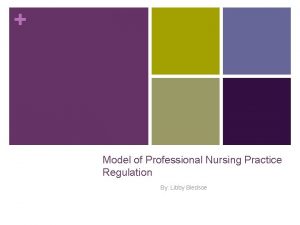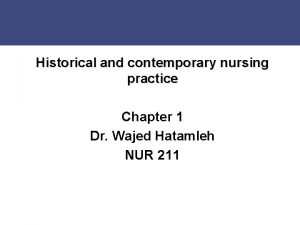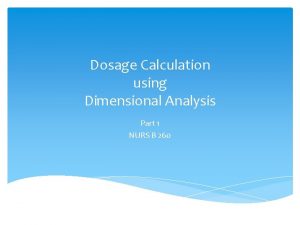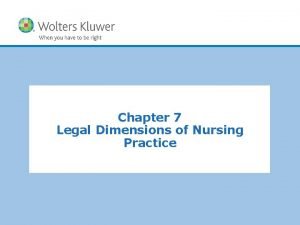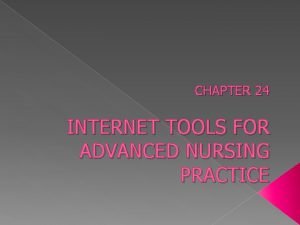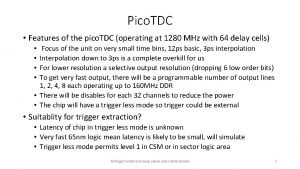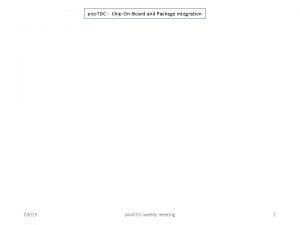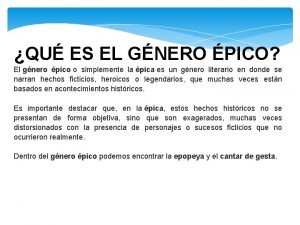National Nursing Practice Network PICO NNPN 2009 Two










- Slides: 10

National Nursing Practice Network P-I-C-O NNPN, 2009

Two Types of Questions Background questions General information Biological, psychological, or sociological aspects of illness Found in textbooks or general websites When do complications of Acute Pancreatitis usually occur? How does Morphine work to decrease pain? What is Ehlers Danlos syndrome? Foreground questions Specific questions answered by research Found in Databases/Research Journals Which is better for reducing pain in adults-Morphine or Demerol? NNPN, 2009

P-I-C-O Model for Clinical Statement/Question Patient, Population, or Problem Intervention or Treatment Comparison Intervention or Treatment Outcome Type of question Type of study NNPN, 2009 University of Illinois at Chicago. (2003). Evidence based medicine. Finding the best clinical literature. Accessed March 30, 2004 from http: //www. uic. edu/depts/lib/lhsp/resources/pico. shtml

Building the Statement/Question Using P. I. C. O. P I C Patient, Intervention Comparison Population, or Treatment Intervention or Problem or Treatment Tips for Building Example How would I describe a group of patients similar to mine? Which main intervention am I considering? Patients with Type 2 diabetes who need to change exercise behavior Behavior Change Conventional Therapy Behavior Modification Usual Care Behavior Therapy NNPN, 2009 What is the main alternative to compare with the intervention? O Outcome What can I hope to accomplish? Exercise Behavior Blood Glucose Control Weight Reduction

Building the Statement/Question Using P. I. C. O. P I C Patient, Intervention Comparison Population, or Treatment Intervention or Problem or Treatment Tips for Building Example O Outcome How would I describe a group of patients similar to mine? Which main intervention am I considering? What is the main alternative to compare with the intervention? What can I hope to accomplish? Hospitalized patients who have a family pet that they are close to (e. g. , for patients with longer stays) Family pet visiting – dogs and cats No visiting of family pets Decreased stress Decreased anxiety Patient and family satisfaction NNPN, 2009

Example of PICO Purpose Statement The purpose of the EBP project is to implement an evidence-based family pet visitation program for hospitalized patients to improve patient and family satisfaction with care delivery and to decrease anxiety associated with hospitalization. NNPN, 2009

Example of PICO Question Unformed practice question: Why do we use ammonia snaps? Question formed using PICO: Do ammonia snaps (intervention) reduce syncope (outcome) in postop surgical patients (patient population) upon standing? What does the evidence say? NNPN, 2009 UIHC Institute, 2007

PICO Example P = patient falls on your psychiatry unit I = fall risk assessment C = pre/post comparison O = improve identification of patients at risk for falling and improve identification of interventions for fall risk factors NNPN, 2009 UIHC Institute, 2007

Sample Purpose Statement The purpose of this project is to develop an evidence-based fall risk assessment for patients on the medical-psychiatry inpatient unit to improve nursing knowledge, use, and documentation of appropriate interventions. A pre/post comparison will be done using current practice for comparison. NNPN, 2009 UIHC Institute, 2007

Using the PICO Method A well formulated PICO statement or question gives direction to find answers more quickly: Helps direct evidence search to best resources Helps focus reading Assists with developing appropriate implementation and evaluation plans Focuses attention on identified learning needs Keeps the team focused Modified from: Mc. Kibbons & Marks, (2001). Posing Clinical Questions: Framing the Question for Scientific Inquiry. AACN Clinical Issues, 12(4), 477 -481. NNPN, 2009
 Pico question nursing shortage
Pico question nursing shortage Myeplg
Myeplg Professional nursing practice 7th edition
Professional nursing practice 7th edition Unit practice council nursing ideas
Unit practice council nursing ideas Putting evidence into nursing practice
Putting evidence into nursing practice Model of professional nursing practice regulation
Model of professional nursing practice regulation Jcaho stands for
Jcaho stands for Florence nightingale definition
Florence nightingale definition How to calculate gtts/min
How to calculate gtts/min Chapter 7 legal dimensions of nursing practice
Chapter 7 legal dimensions of nursing practice Internet tools for advanced nursing practice
Internet tools for advanced nursing practice





